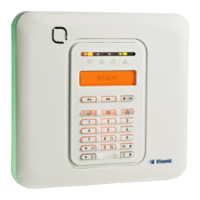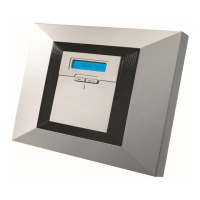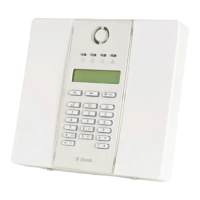INTRODUCTION
4 D-303223 PowerMaster-10 / PowerMaster-30 User's Guide
• Liquid crystal display (LCD): Plain-language status information and prompts are displayed on the front
panel in large, clear text.
• Real-time clock: The present time is visible on the display. This feature is also used for the log file by
providing the date and time of each event.
• Various reporting destinations: Events can be reported automatically to monitoring stations, private
telephones and mobile phones of your choice, and even by SMS if GSM is installed.
• Selective reporting: Your installer can determine what type of events will be reported to which destination.
• Latchkey mode: An automatic “Latchkey” message is sent to chosen telephones if the system is disarmed by
a “latchkey” user (a junior family member, for instance). (See Chapter 2.)
• Spoken announcements and instructions
∗
∗∗
∗
: Status-dependent, pre-recorded verbal messages are heard
over the built-in loudspeaker (if the voice prompts are enabled - see chapter 4).
• Message exchange
∗
∗∗
∗
: Before leaving the premises, you may record a short verbal message for other users of
the system who may arrive later. Upon arrival, you can listen to verbal messages left by others for you.
• Access from remote telephones: You may access the PowerMaster-10 / PowerMaster-30 from a remote
telephone and Arm/Disarm it or receive system status information. (See Chapter 5).
Note: Remote operation is performed per partition, or per user code defined for a particular partition, when
partition is enabled
∗∗
.
• Numerical keys serve as function keys: When the system is disarmed, the numerical keys are used also to
control various system functions. A simple icon on each key identifies the task of that key.
• Data retrieval: You can obtain status information, trouble information and review memorized alarm events
visually. (See Chapter 3).
• Event log: System events are memorized in an event log that stores the most recent 1000 events, each
tagged with the time and date of the event. You can access this log and review the past events in case of
need such as after a burglary. (See Chapter 10. Maintenance).
• Looking after elderly, physically handicapped and infirm individuals: The system can be programmed to
monitor people activity within the protected area and send out an alert message if no movement is detected in
the area for a predefined period of time (See Chapter 6. Menus and Functions).
• Distress calls: Miniature pushbutton portable transmitters given to specific individuals may be used for
sending emergency calls for help.
• Disarming under duress: If a user is forcibly compelled to disarm the system, he can do so using a special
code ("Duress Code") that disarms the system as usual, but also sends a silent alarm to the monitoring station
(see Chapter 2. Operating the PowerMaster System).
• System supervision: All wireless peripherals within the protected site send periodic keep alive supervision
messages. If such a message is overdue, the PowerMaster-10 / PowerMaster-30 displays a 'missing' trouble
message. Your installer can disable this feature if so desired.
• Battery supervision: The PowerMaster-10 / PowerMaster-30 continuously monitors the battery condition of
the sensors and devices in the system and displays a ‘Low Battery’ message whenever a battery needs to be
replaced within a maximum of 30 days. Wireless sirens can still provide 2 siren alarms before the siren
becomes totally inactive.
∗
Refers to PowerMaster-30 with voice option only
∗∗
Refers to PowerMaster-30 only

